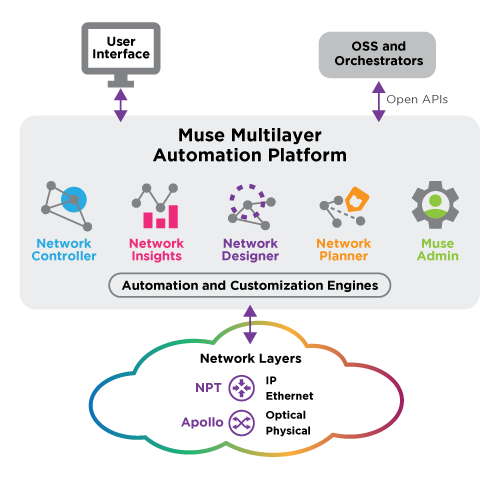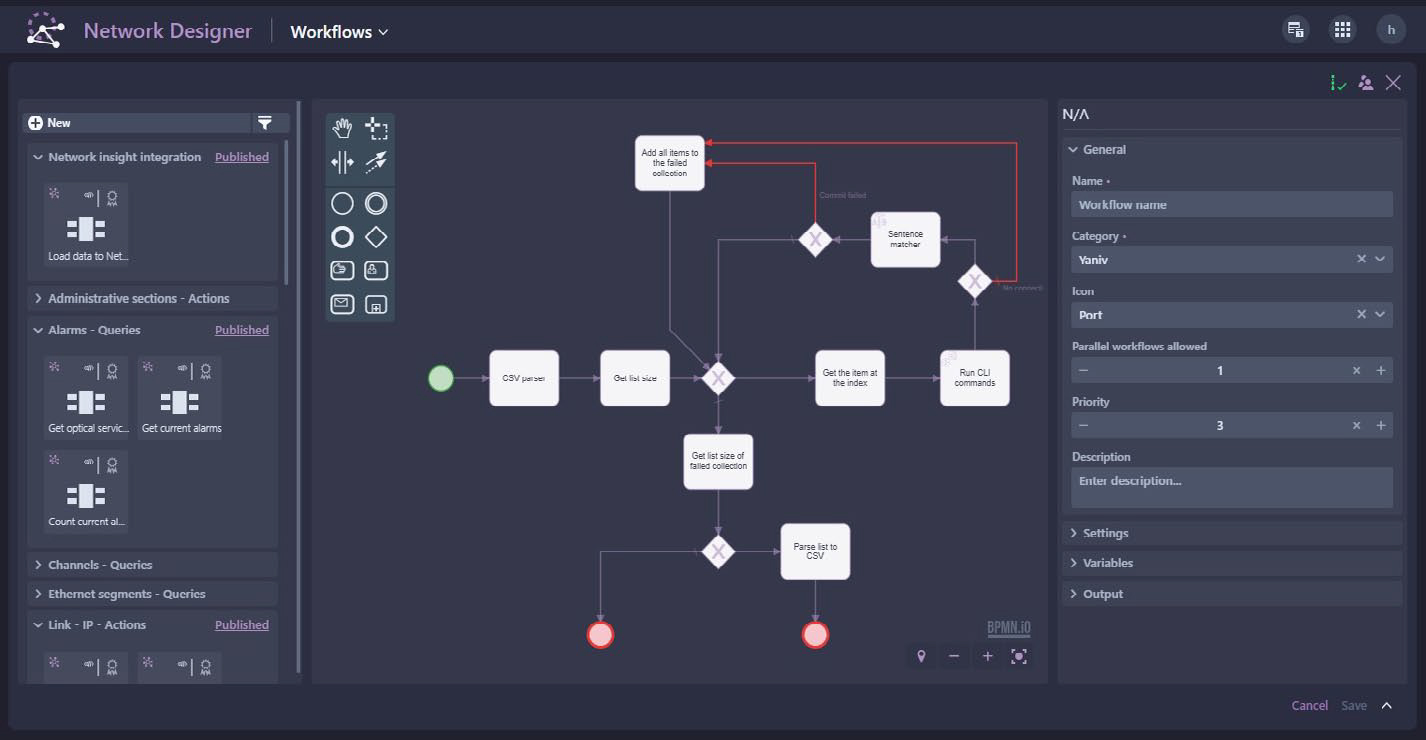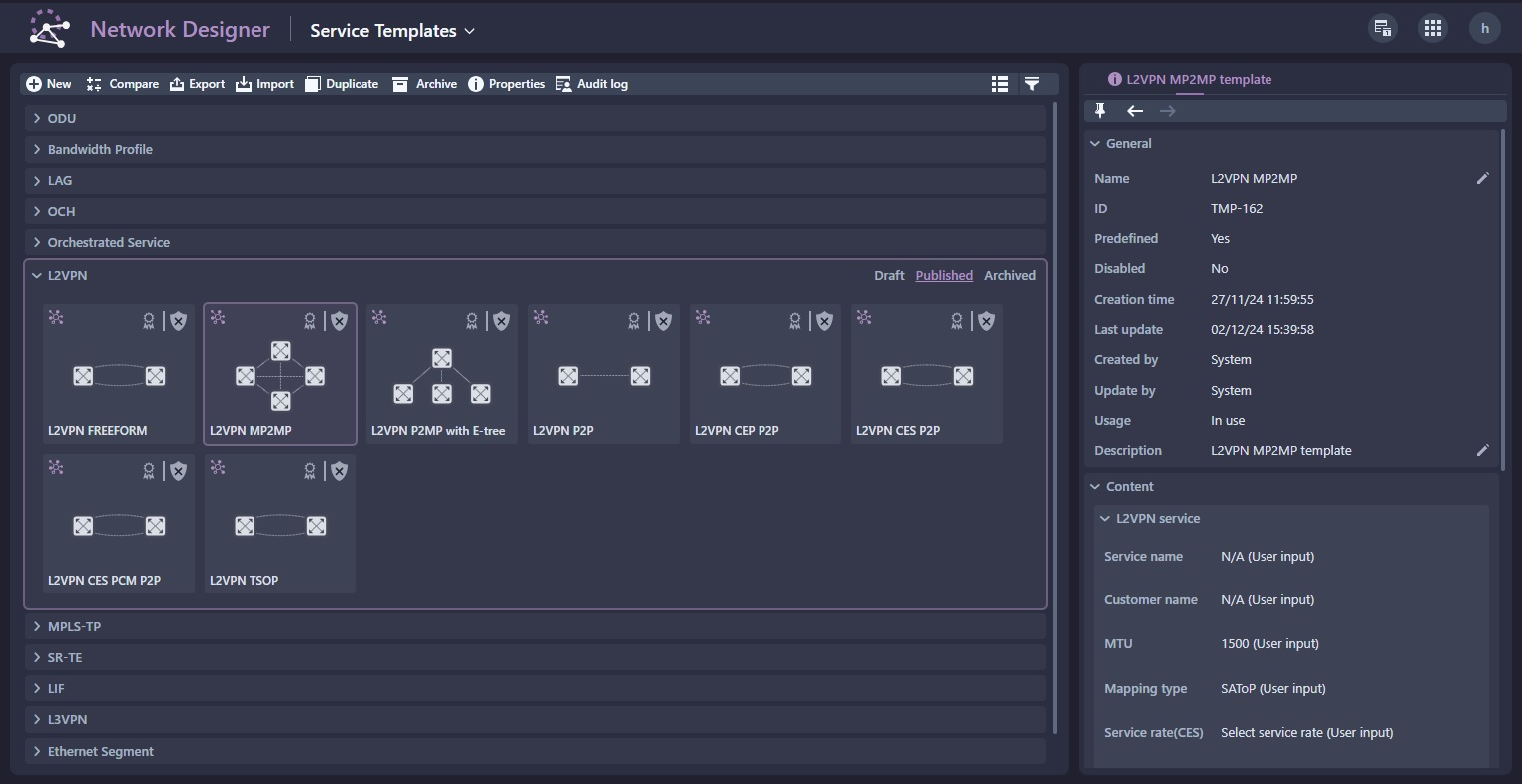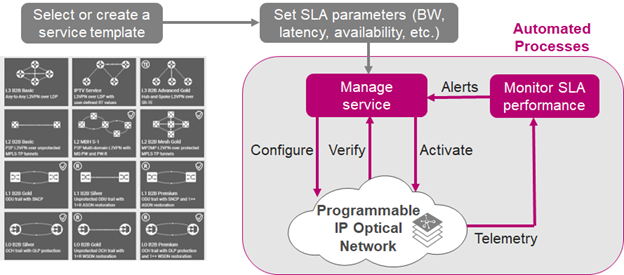Accelerate Your Network Automation with Muse Automation Platform
In today’s fast-paced digital landscape, network automation has become a vital tool for service providers seeking to enhance efficiency, reduce operational costs, and improve customer satisfaction. Muse, a platform developed by Ribbon Communications, stands at the forefront of this transformation. This blog post summarizes how Muse leverages low-code platforms to streamline and automate network operations to drive profitability in IP Optical Networks.
For an in-depth view, please click below to download the Muse whitepaper.
The Importance of Network Automation
Network automation is the application of technology to configure and control network operations with minimal human intervention. A study by Analysys Mason shows that automating network operations can reduce operating costs by up to 56% and increase revenues by 10% due to faster service activation.
Automation can assist service providers in addressing profitability challenges throughout the network operations lifecycle. It can optimize the use of capex, reduce operating costs including reducing human errors, speed up time to revenues, increase network availability, and elevate customer satisfaction. The table below gives some examples of automation
| Operations Area | Benefits |
|---|---|
|
Network Planning and Engineering |
|
|
Service Delivery and Assurance |
|
|
Network Health and Maintenance |
|
Low-Code Platforms: Revolutionizing IP Network Automation
Despite these clear benefits, many service providers face challenges in implementing automation due to the complexity and costs associated with new software and processes. Traditional software development methods often require extensive coding skills and professional services, making it difficult for network operations personnel to implement automation independently.
However, low-code platforms address these challenges effectively, with multiple advantages:
- User-Friendly Interfaces: Low-code platforms provide intuitive graphical interfaces, enabling users with minimal coding experience to develop applications.
- Rapid Development: These platforms facilitate faster time to market by allowing users to create, test, and deploy applications quickly.
- Cost-Effective Solutions: By reducing the need for professional services, low-code platforms lower development costs significantly.
- Empowerment of Citizen Developers: Network operations staff can become citizen developers, allowing for automation based on their priorities without extensive software development projects.
What is the Muse Automation Platform?
Ribbon is a leader in implementing low-code platforms, incorporating them as a fundamental part of our Muse Multilayer Automation Platform (MAP). Muse offers a comprehensive suite of applications for network control, analysis, design, and planning, and significantly simplifies the introduction of network automation within IP Optical Networks. Muse low-code platforms operate seamlessly across all network layers, L0 to L3, and can be initiated from external systems via APIs.
Muse applies low-code capabilities across the entire operations lifecycle.
Workflow Automation – Service providers can implement automation at their own pace using tools to set execution triggers, define tasks, and manage workflows. Any operational sequence can be converted into an automated workflow. Crucially, these workflows can undergo comprehensive testing before activation and can incorporate pauses for human confirmation.
Muse Workflow Automation Screenshot
Service Creation - Muse offers a comprehensive catalog of pre-defined templates for L0-L1-L2-L3 services that enhance time-to-market efficiency, support the design of innovative new services, and minimize human errors by specifying all permissible service parameters and default values. Muse low-code tools allow operators to modify existing service templates and create new ones from scratch.
Muse Service Template Screenshot Highlighting L2VPN Services
Network Design - Muse low-code node design templates enable operators to model and incorporate 3rd-party network equipment in a network design, including DWDM platforms, OTN switches, IP routers, and microwave radio gear. All nodes and equipment can be integrated into the network control topology and services and can be managed via dedicated southbound interfaces.
Network Insights (Analytics) – Muse Network Insights transforms raw data into actionable information, assisting network operators to effectively operate and optimize their networks. Data sets encompass physical, logical, and service inventories, services performance, and alarms. Using Muse's low-code tools, operators can customize how data is presented in dashboards and reports.
A notable example of collaborative automated processes is Muse's implementation of automated closed-loop service provisioning. This approach allows service providers to expedite revenue generation, improve customer satisfaction, and reduce costs.
Muse Closed-Loop Automated Service Provisioning
Exploring Muse in More Detail
Low-code platforms present a transformative opportunity for network operations staff, allowing them to automate and streamline processes without specialized skills. Muse Multilayer Automation Platform is a leader in this domain, offering numerous benefits that empower service providers.
For more information about Muse and to see it in action, visit the following links:









